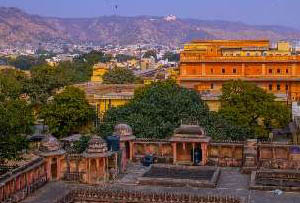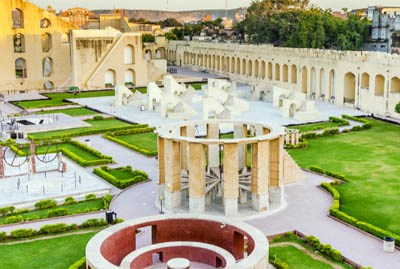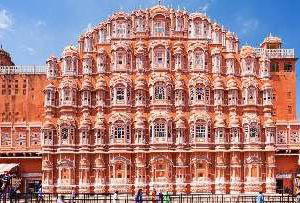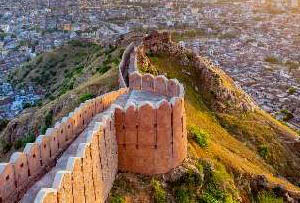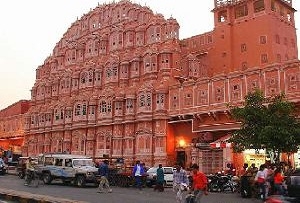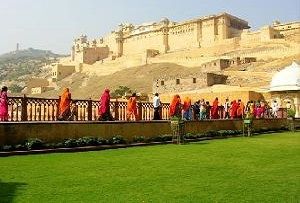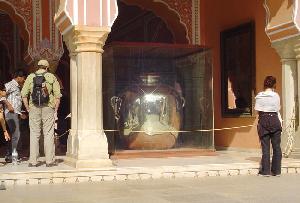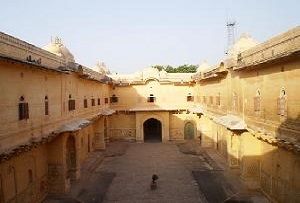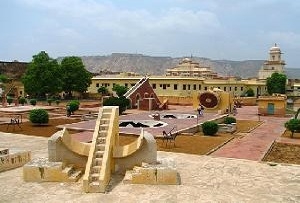Jaipur, the Pink City, where history meets elegance through its iconic palaces and bustling bazaars. With 34 years of expertise, Indian Holiday brings you the best-customised tour packages and trusted local support, ensuring a journey as royal as Rajasthan itself.
Still, wondering why Indian Holiday is your best choice? Read this: Your Complete Guide to Stress-Free Group Travel with Indian Holiday How to Plan a Stress-Free Family Vacation with Indian Holiday
Here, you can find the final resting place of Sawai Madho Singh, Sawai Jai Singh, and Sawai Ram Singh adorned with Chattris. You will learn about the history and excellence of Rajasthani art and architecture of a bygone era, providing an insightful experience. Are you planning a visit to Gaitor Ki Chhatriyan in Jaipur? Here’s a complete guide to help you make the most of this royal crematorium.
Explore 12 days Golden Triangle tour with Golf
History
The Kacchwaha, a Rajput dynasty, maintained this royal cremation ground. In the 18th century, Maharaja Jai Singh II, the founder of Jaipur City, chose this site as his cremation place. Soon after him, all the Kachhwaha rulers cremated him. Besides, the cenotaph of Maharaja Sawai Ishwari Singh is missing, as his burial took place at the City Palace complex of Jaipur.Architecture
The chhatris are built according to Vedic architectural guidelines with Indo-Persian influences. As per Vedic norms, they are located north of the city. The rulers built these crematoriums and monuments in isolated places not seen from afar. Gatore Ki Chhatriyan Jaipur is scattered around the complex, which appears to be a blend of tiny open-air palaces and towers. It indicates the sites of prior kings’ cremations. The Cenotaph is shaped like an umbrella, thus called a chhatri. The city’s rulers also built other structures in sandstone, with elephants, combat scenes, etc., beautifully and intricately carved on them.
Did You Know? Until a few years ago, people gathered to light lamps to honour their rulers as the sun went down. But as time passed, this activity faded away. Explore Gatore ki Chhatriyan, a must-see for Jaipur visitors.
Check out our Jaipur Holiday packages.
Six Prominent Chattris at Gatore Ki Chhatriyan
1. Royal Chattri of Maharaja Sawai Jai Singh II
The first Chattri is dedicated to Maharaja Sawai Jai Singh II, the founder of Jaipur. It is made of white Makrana marble and is adorned with stunning carvings. The structure has 20 pillars, and an octagon supports the central dome. It has intricate patterns depicting Hindu mythology, battle scenes, and floral motifs.2. Maharaja Ram Singh II Chattri
This structure is similar to Sawai Jai Singh II Chattri and is built to honour one of Jaipur’s most capable administrators and reformers. Under the rule of Ram Singh II, the kingdom and its people experienced substantial progress.
Ready to explore more of Jaipur? Check out our Jaipur top 5 places to visit list for inspiration. Don’t miss the Gatore ki Chhatriyan!
3. Sawai Madho Singh Chattri
The next chhatri is Sawai Madho Singh, the most ornate and elaborate chhatri commissioned by Maharaja Sawai Pratap Singh. It is a unique combination of stone and marble work that resembles the Taj Mahal. Despite its apparent simplicity, it is adorned with intricate design elements and ornamental carvings.4. Maharaja Sawai Pratap Singh
This chhatri, situated at next to the entrance and against the backdrop of Nahargarh Fort, resembles the Sawai Madho Singh chhatris. Its intricate design reflects Pratap Singh’s devotion to God Krishna.5. Baiji Ki Samadhi
There is a large chhatri in the centre, dedicated to the daughter of Maharaja Sawai Madho Singh II. It is built of sandstone, with intricate carvings and a substantial European influence.6. Maharaja Sawai Man Singh II & His Son
Maharaja Sawai Man Singh II and the chhatris of his son Bhawani Singh are not large. However, the plinth section includes intricate details about their personalities, such as their love for polo. Apart from these chhatris, there are also many other monuments and chhatris, such as the Jagat Singh Chhatri, in the Gatore ki Chhatriyan, that you can explore.
Discover the architectural wonders of Jaipur’s historical sites.
Timings
The Gatore ki Chhatriyan is open daily from 10 a.m. to 6:30 p.m. Visit early in the morning to get the best view and avoid crowds.Entry Fee
The entry fee is INR 30 per person, and for children and students, it is INR 20. Visitors from other countries will be charged INR 50.Best time to visit
October to March is the best time to visit Gaitor Ki Chhatriyan. The weather is pleasant in these months, perfect for sightseeing and outdoor activities.
Ready to start your Jaipur Itinerary ? Explore our Jaipur Guide for complete information.
Location/Address
Gatore Ki Chhatriyan Address: 309B, Mangala-Road, Bada-Akhada, Krishna-Nagar, Brahampuri, Jaipur-Rajasthan Pin Code-302002
Browse through our Rajasthan Tour Packages from Mumbai, Udaipur Tour Packages from Surat, Jaipur Tour Packages from Bangalore
Things To Do at Gatore Ki Chhatriyan
Located in Jaipur, Gatore Ki Chhatriyan offers visitors several activities that they can enjoy. Here are some things that you can do at Gatore Ki Chhatriyan:- Explore the Architecture: Gatore Ki Chhatriyan is known for its exquisite architecture. Visit the site and admire the beauty of intricate carvings, domes, and pillars. The Stonemasonry of this attraction is truly remarkable.
- Photography: The Gatore Ki Chhatriyan offers many opportunities for photography enthusiasts. Observe the cenotaphs and the surrounding landscape and capture their beauty.
- Birdwatching: Gatore Ki Chhatriyan is home to various bird species. Take a look at the colourful birds around the park. For nature enthusiasts, it’s a delightful activity.
Places to Visit Nearby
Here are some famous places that you can visit near Gatore ki Chhatriyan:- Garh Ganesh Temple (400m – 5 minutes)
- Hawa Mahal (3.4 km – 13 minutes)
- City Palace (3.0 km – 12 minutes)
- Jantar Mantar (3.3 km – 12 minutes)
- Albert Hall Museum (4.4 km – 16 minutes)
- Nahargarh Fort (12.5 km – 27 minutes)
- Amer Fort (7.7 km – 20 minutes)
How to Reach
To reach Gatore Ki Chhatriyan in Jaipur, you can use various modes of transportation, such as:
By air: Jaipur International Airport is approximately 14.8 kilometres from Gatore Ki Chhatriyan. Upon arrival, take a taxi, shuttle bus or ride-sharing service like Ola.
By train: Jaipur Railway Station is approximately 6.9 kilometres away. To reach Gatore Ki Chhatriyan, take rickshaws or taxis outside the station.
By bus: The nearest bus stop is Sindhi Camp Bus Stand, 5.8 kilometres from Gatore Ki Chhatriyan. Take a local bus to Brahmapuri and walk a few minutes to the site.
Nearest metro: The nearest metro to Gatore ki Chhatriyan is Sindhi Camp Metro, which is approximately 5.5 km away.
Check out Rajasthan Tour Packages, Udaipur Tour Packages, Ramkunda Tour Packages, Jodhpur Tour Packages



